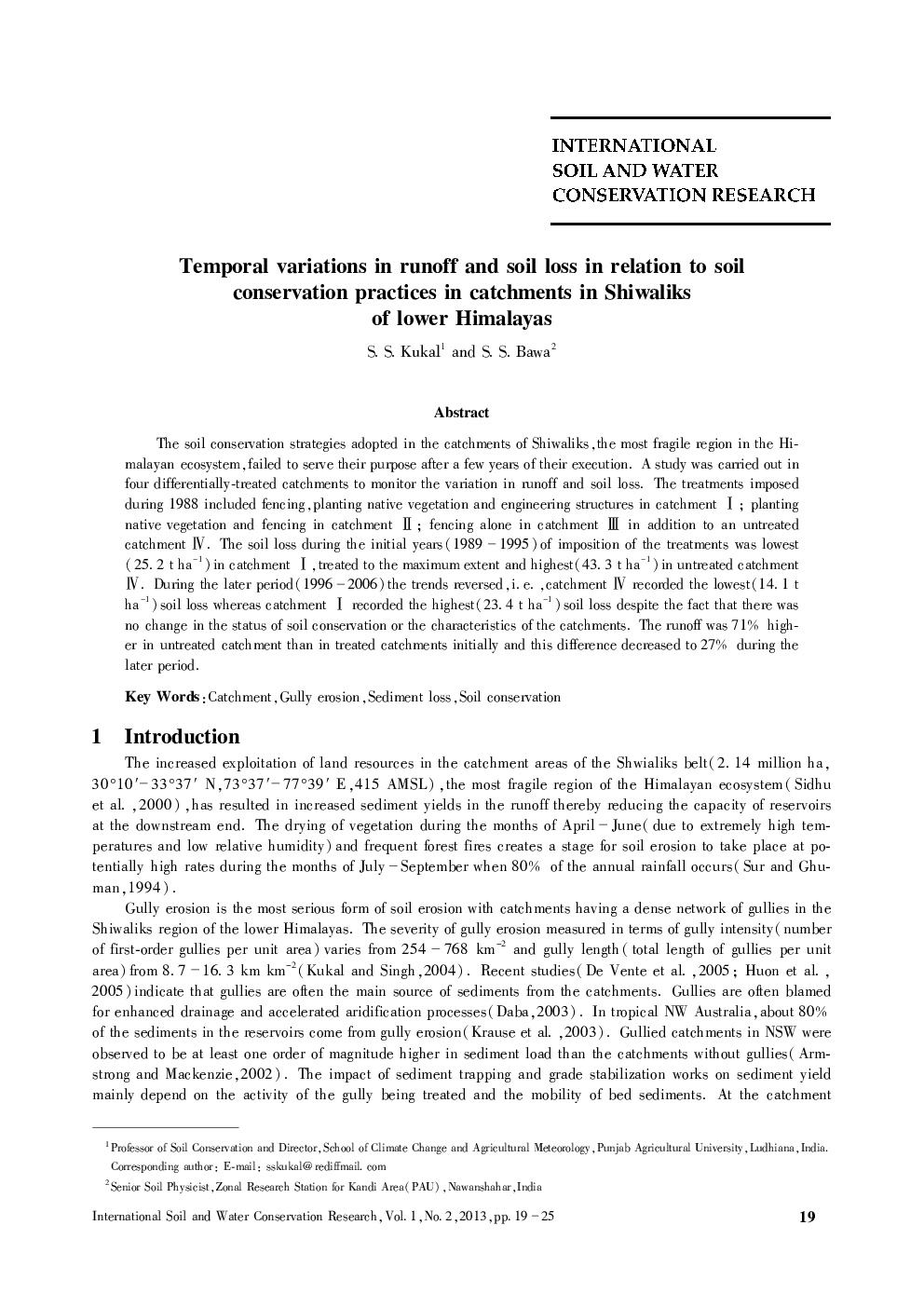| Article ID | Journal | Published Year | Pages | File Type |
|---|---|---|---|---|
| 4452091 | International Soil and Water Conservation Research | 2013 | 7 Pages |
The soil conservation strategies adopted in the catchments of Shiwaliks, the most fragile region in the Himalayan ecosystem, failed to serve their purpose after a few years of their execution. A study was carried out in four differentially-treated catchments to monitor the variation in runoff and soil loss. The treatments imposed during 1988 included fencing,planting native vegetation and engineering structures in catchment I ; planting native vegetation and fencing in catchment II ; fencing alone in catchment III in addition to an untreated catchment IV. The soil loss during the initial years (1989 – 1995) of imposition of the treatments was lowest (25. 2 t ha- 1) in catchment I, treated to the maximum extent and highest (43. 3 t ha - 1) in untreated catchment IV. During the later period (1996 – 2006) the trends reversed, i. e., catchment IV recorded the lowest (14. 1 t ha- 1) soil loss whereas catchment I recorded the highest (23. 4 t ha- 1) soil loss despite the fact that there was no change in the status of soil conservation or the characteristics of the catchments. The runoff was 71 % higher in untreated catchment than in treated catchments initially and this difference decreased to 27% during the later period.
